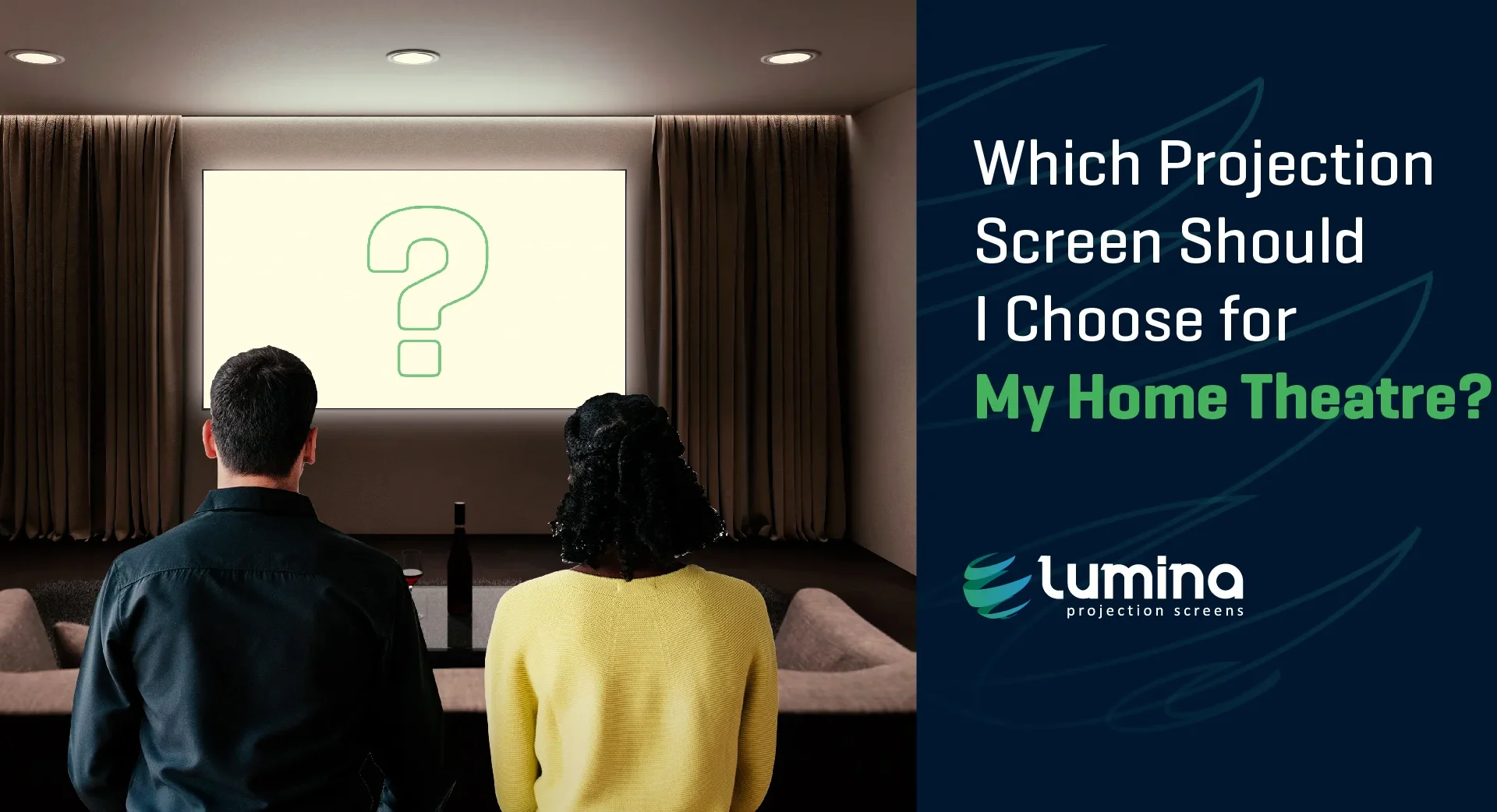
Creating a home theatre is all about bringing the the cinema to your home. The right kind of projection screen makes a difference for Indian homes, with diversity in room lighting and room sizes. This guide will help you consider major factors when selecting a projection screen with some recommendations from Lumina Screens.
What is a Projection Screen?
The projection screen is the surface onto which images are projected in a home theatre setup. Unlike the TV, projection screens are designed to optimize picture quality to create the cinematic feel of rich colors and deep contrasts.
Key Considerations :-
Projection Screen Material: The material of the projection screen plays a critical role in how images appear. For example, Lumina Screens offers high-quality screens with specially engineered fabric that delivers deep contrasts and stunning visuals.
Screen Gain: It measures the reflectivity of the screen surface. A screen with higher gain is going to reflect more light and, therefore, the image will be brighter, which is important for rooms with more ambient light.
Ambient Light Rejection: This technology helps to maintain picture quality by rejecting ambient light, which can wash out the image. So if you have ambient light in your home that you cannot control, consider choosing an ALR screen.
Matching The Right Screen to Your Space
Room Size and Viewing Distance
When choosing the size of your projection screen, consider the size of your room and the distance between the screen and the seating area. As a thumb rule, the screen width should be about one-third of the distance from the screen to the seating area.
Lighting Conditions
If your room has ambient light that cannot be controlled, consider opting for an ALR screen. Lumina’s Leor series are ALR screens which are designed to reject ambient light and provide contrast and depth, ideal for challenging lighting situations.
Maintenance Guidelines
Your projection screen is easy to take care of. It only requires regular dusting and gentle cleaning with a soft cloth in order to keep both the finish and the performance at its best. Selecting the right projection screen will make all the difference in your home theater experience.
By understanding your space, lighting, and viewing habits, and by choosing a high-quality screen from Lumina Screens you can elevate your home entertainment experience to a new level.
FAQ’s
How do I choose the right projection screen for my home theater?
The right screen depends on your room size, viewing distance, and light conditions. Lumina Screens offers various types, including matte white, grey, and high-gain options for different setups.
What is the difference between matte white and high-gain screens?
Matte white screens provide uniform brightness in dark rooms, while high-gain screens enhance brightness, making them ideal for rooms with ambient light.
Should I choose a fixed or motorized screen?
Fixed screens offer superior image quality with a smooth, wrinkle-free surface, while motorized screens offer flexibility and a clean look when not in use.
What size projection screen is ideal for my home theater?
Screen size depends on room size and seating arrangement. Typically, a screen that fills about 40-50% of your viewing angle provides the best immersive experience.
Can Lumina Screens be used for both home theater and professional setups?
Yes, Lumina Screens provide versatile solutions suitable for both home theaters and professional environments, ensuring optimal performance in any setting.
- Date - August 29, 2024